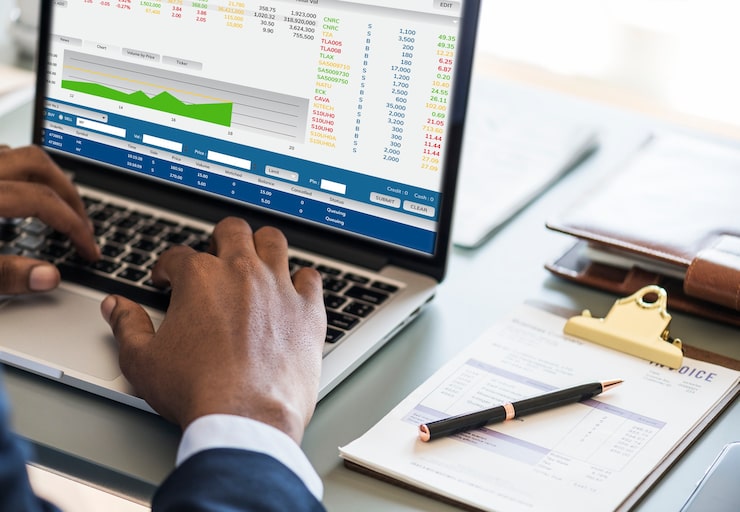 October 7, 2025
October 7, 2025
In Uganda’s competitive financial and business environment, debt recovery is more than a financial necessity—it is a strategic decision that influences profitability, customer relationships, and business reputation. Companies and financial institutions that extend credit must constantly evaluate how best to recover overdue payments without damaging client trust.
Two primary methods dominate the debt collection landscape: tele-collection (remote recovery through calls, SMS, and emails) and field visits (face-to-face debt recovery at the client’s location). Each method comes with unique strengths, challenges, and implications for both lenders and borrowers.
This article provides a deep dive into tele-collection vs field visits, analyzing which debt recovery approach is more effective in the Ugandan context. We’ll examine cost implications, efficiency, customer perception, and industry best practices, and highlight how Boresha Credit Services leverages both approaches to deliver balanced, ethical, and results-driven recovery solutions.
Understanding Tele-Collection
What is Tele-Collection?
Tele-collection refers to debt recovery conducted remotely through:
- Phone calls
- SMS reminders
- WhatsApp messages
- Emails
- Automated IVR (Interactive Voice Response) systems
It is the first line of contact with a debtor once payments are overdue.
Advantages of Tele-Collection
- Cost-Effective – Minimal travel or logistical expenses.
- Faster Reach – Collectors can contact multiple debtors daily.
- Less Intrusive – Clients perceive calls/SMS as gentler than face-to-face visits.
- Convenience – Debtors can make instant mobile money transfers upon reminder.
- Scalable – One collector can manage hundreds of accounts remotely.
Challenges of Tele-Collection
- Evasion: Debtors can ignore calls or block numbers.
- Limited Personal Touch: Difficult to read non-verbal cues.
- Communication Barriers: Misunderstandings may arise without in-person discussions.
- Effectiveness Decline in Long-Term Defaults: Persistent non-payers often require stronger interventions.
Understanding Field Visits
What are Field Visits?
Field visits involve debt recovery officers visiting a debtor in person—at home, workplace, or business premises. This is typically used when tele-collection fails or for high-value or sensitive accounts.
Advantages of Field Visits
- Higher Impact – Physical presence emphasizes seriousness.
- Personalized Engagement – Collectors can assess the debtor’s situation firsthand.
- Difficult to Ignore – Harder for debtors to avoid face-to-face interactions.
- Relationship Building – Can foster better negotiations when handled professionally.
- Evidence Gathering – Collectors can confirm addresses, business activity, or asset ownership.
Challenges of Field Visits
- Expensive – Requires transport, allowances, and time.
- Safety Risks – Some debtors may react aggressively.
- Reputation Risk – Poorly conducted visits may appear as harassment.
- Scalability Issues – Limited number of clients can be visited daily.
Tele-Collection vs Field Visits: Key Comparisons
| Factor | Tele-Collection | Field Visits |
| Cost | Low | High |
| Reach | High (hundreds daily) | Low (few clients per day) |
| Impact | Moderate | Strong |
| Customer Perception | Less intimidating | May feel intrusive |
| Effectiveness in Early Stages | Very high | Moderate |
| Effectiveness in Long-Term Defaults | Low | Very high |
| Scalability | Highly scalable | Limited scalability |
| Best Use Case | Early-stage recovery, reminder notices | High-value accounts, persistent defaults |
Ugandan Context: Which Works Better?
In Uganda, the effectiveness of debt recovery methods depends on cultural, economic, and technological factors:
- Mobile Money Dominance – Tele-collection integrates well with MTN Mobile Money and Airtel Money, allowing instant payments after a reminder.
- Community-Oriented Culture – Face-to-face interactions carry weight; debtors take physical visits more seriously.
- Urban vs Rural Divide – Tele-collection works better in urban areas with reliable mobile access, while rural debtors may require in-person visits.
- Value of the Loan – Small loans (UGX 50,000 – UGX 1M) are best handled via tele-collection. Larger loans often require personal visits.
Thus, neither method is universally superior. The most effective strategy is a hybrid approach—starting with tele-collection, escalating to field visits when necessary.
Best Practices for Tele-Collection
- Train collectors in polite, empathetic communication.
- Use automated systems to schedule reminders.
- Keep records of all calls, SMS, and emails.
- Offer flexible repayment options during calls.
- Avoid excessive pressure—respect borrower dignity.
Best Practices for Field Visits
- Plan visits only after multiple failed tele-collection attempts.
- Send professional representatives trained in ethical negotiation.
- Visit during appropriate hours and respect cultural norms.
- Always carry official identification and authorization letters.
- Avoid threats or intimidation—focus on constructive dialogue.
- Document all discussions and agreements during the visit.
Case Study: Hybrid Approach in Uganda
A Kampala-based microfinance institution struggled with rising defaults among boda-boda loans. Their process:
- Tele-Collection First: Automated SMS reminders, followed by polite phone calls.
- Field Visits Next: For clients who ignored multiple reminders, trained officers conducted structured visits.
- Flexible Repayment Plans: Clients were allowed to pay smaller installments via mobile money.
Result: Recovery rates improved by 65%, and customer complaints decreased, proving that combining tele-collection with selective field visits is the winning formula.
Role of Boresha Credit Services in Debt Recovery
At Boresha Credit Services Uganda, we blend tele-collection and field visits for maximum effectiveness. Our approach includes:
- Automated Tele-Collection Systems – SMS, emails, and structured phone calls.
- Professional Field Agents – Trained officers who conduct respectful, ethical visits.
- Hybrid Recovery Strategy – Starting with remote communication, escalating to visits only when necessary.
- Technology Integration – Mobile money and digital platforms for seamless repayment.
- Client Relationship Focus – Ensuring businesses recover funds without damaging long-term loyalty.
This balanced method helps Ugandan businesses recover loans ethically, efficiently, and sustainably.
FAQs on Tele-Collection vs Field Visits
Q1: Which is more cost-effective, tele-collection or field visits?
Tele-collection is more cost-effective since it requires fewer resources and reaches more debtors daily.
Q2: Do borrowers respond better to calls or in-person visits?
It depends. Many borrowers respond quickly to phone calls, but chronic defaulters often require the seriousness of field visits.
Q3: Is it legal for debt collectors to visit clients at home in Uganda?
Yes, but visits must comply with Ugandan laws and ethical guidelines. Harassment or threats are strictly prohibited.
Q4: Can small businesses rely only on tele-collection?
Yes, for small-value loans. However, for high-value or long-overdue debts, field visits may still be necessary.
Q5: How does Boresha Credit Services manage debt recovery?
Boresha uses a hybrid approach—starting with tele-collection and escalating to professional field visits only when required, ensuring efficiency and client dignity.




